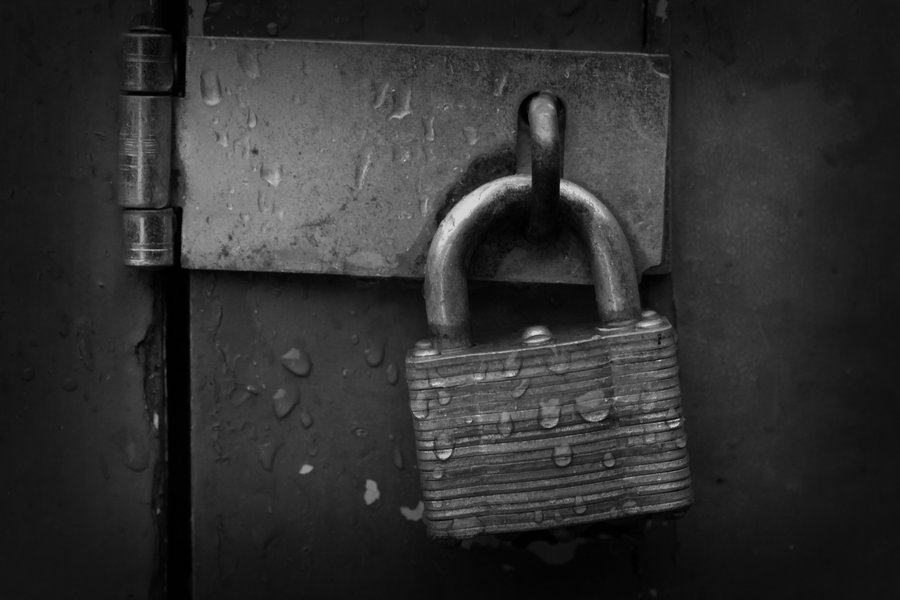In the beginning, there was the word.
But it was quickly followed by concerns about distribution channels, business models and revenue streams.
Over the past two years, two different authors — horror master Stephen King and TidBITs publisher Adam Engst — have made attempts at bypassing traditional paper-and-ink publishing and physical distribution in favor of a completely electronic model. Other than the “electronic-ness” of their offerings, though, the two experiments have very little in common.
When King conducted his experiment in online publishing in 2000, he wrote a serialized novel, The Plant, and made it available for download — one chapter at a time, purchased on the honor system. But there was a twist: if the pay-to-download ratio dipped below 75%, writing would cease and the experiment would be deemed a failure — proof that people weren’t trustworthy enough not to “steal from the blind newsboy,” as King put it.
After just a few installments of The Plant, though, King announced that writing on future chapters would cease while he “devoted himself to other projects.” While not out-and-out charging readers with assault on that sightless paper carrier, the implication was certainly there; according to the New York Times, the percentage of paid downloads of the latest chapter had dipped into the forties.
There’s room for more than one conclusion from King’s experiment, though: one that doesn’t require indicting the majority of The Plant readers as thieves. The most obvious is that King’s plan to sell and distribute The Plant was based on a bad business plan and flawed analogies. One that even in the most optimistic scenario could only have worked for someone of King’s stature, anyway, and therefore would have been meaningless for the publishing industry as a whole — or for authors in general.
What King wanted his readers to do is pay $1 for each of the first three installments (for each format: PDF, html, plain-text, PDA-formatted) of his story. Although King couldn’t say exactly how may installments would comprise The Plant, he did commit to a maximum charge of $13 — about the price of a hard cover novel, he wrote on his website. Some readers immediately criticized the cost as too high. They complained that when they paid for the paper and toner/ink to print the installments, the price would rise even higher.
There were even more vociferous complaints over King’s insistence that each time you downloaded a particular installment, you had to pay again or be labeled a leech. The problems were obvious: Accidentally erase installment one? Here’s another, please proceed to the cashier. Want to read it on your Palm at the beach? Sorry, you downloaded the PDF. If you want a version formatted for a handheld, pony up another buck.
I don’t think the problem here is greed, but rather King’s flawed comparison between paper and virtual publishing. The Plant may wind up costing about the same as a traditional novel, but it’s not one. Long documents like novels are not easily read on screen, and the cost of the paper and toner or ink to print out each installment is not insubstantial. Further, the electronic version of the book doesn’t have nearly the same production costs associated with it. Sure, there’s the cost of hosting the site, the bandwidth charges for the thousands of downloads and the processing costs of online payments. But that’s nothing compared to the cost of make-ready, galleys, film, plates, printing, binding, book jackets, distribution, publisher’s markup, seller’s markup, promotional displays, etc., etc. For King to compare the two methods that way is either disingenuous or naive. If I am going to pay full price for a book, you’d better believe I’m going for the one that I can pick up and hold, read in bed or on a park bench, put on a bookshelf, save for my kids or donate to my public library. The potential of online publishing is that it makes it possible to get literature distributed without the overhead of conventional publishing. And if it’s going to succeed, the prices of the online titles must be substantially lower than those of their paper-and-ink counterparts.
Another complaint was that King expected payment each time a file was downloaded, even if it was just a different format of the same installment, for instance, by a reader who downloaded a PDF version, then wanted to read it on the train with an eBook. King’s analogy was that was akin to walking into a bookstore and telling the clerk that since you already had the hardcover version of a book, you expected to get the paperback version for free. It’s an analogy that doesn’t work on several fronts. First, if you already have a physical copy of a book, it’s unlikely you’d need another one. You can take the same book with you on that subway, or the living room of your house, or into the bathroom of your office, for that matter. With an electronic book, you are tied to the hardware that can display it. (Just try getting your desktop computer into your office bathroom.) Besides, a hardcover and a paperback version of the same book each has a significant cost associated with its production; there is no additional cost in producing another copy of the same electronic file. Again, physicality carries extra costs that virtual products don’t. By not realizing this, King virtually doomed his virtual experiment.
Think of it this way: for King’s experiment to have been considered any kind of success, it would have to be repeatable. But who, other than someone with the following and status of Stephen King or Tom Clancy or John Grisham, would have had even a chance of pulling it off?
This week, technology writer and TidBITs publisher Adam Engst wrote that he was conducting an experiment in online publishing of his own. Backed by Peachpit Press, Engst is publishing his forthcoming book (about Apple’s iPhoto) as a PDF list priced at $20; buyers will then get a paper-and-ink version of the book’s next edition for free. “It was a perfect solution,” Engst wrote in his newsletter, crediting his wife Tonya for the idea. “Since it didn’t require people to figure out the value of an electronic book, it wouldn’t automatically cannibalize sales of the next edition, and it would ensure that people could benefit from the book for months before the next edition would be available.”
Engst faced the same concerns about “robbing the blind newsboy” that King did, but took a decidedly different stance. “The only people who will have it initially are people who have paid for it,” he wrote, “and my foreword to the electronic edition asks them to share the book as though it were a physical book, at least in the sense of asking the recipients to buy their own copy if they’re using it a lot.”
Still, Engst is realistic about unauthorized copying, and comes to a conclusion the horror writer might find, well, shocking. “After a while, I’m sure there will be copies floating around from a variety of pass-along situations, but you know what? I think that’s a good thing. This electronic book will be obsolete within a few months, and it will be replaced with a paper edition that can’t easily be copied. Sure, some people will get a copy, read it, and determine it’s not worth buying. That’s fine with me — they would have been unlikely to buy it anyway, so no harm done. Others will get a copy, find that it’s useful, and purchase a copy so they can have the print version when that comes out. That’s great — the copies served as free advertising. And undoubtedly there will be some who will get a copy, find it useful, and never pay, which sounds much like what happens with books stored in those subversive organizations called libraries. Frankly, I don’t mind — I’m happy that someone will have benefited from my efforts in such a way that doesn’t add to my email workload.”
The different roads to online publishing taken by King and Engst belie their different backgrounds. King, coming from conventional publishing, sees electronic publishing as analogous to the physical method.
Engst, on the other hand, with his technological perspective, sees things differently. As we wrote back when King uprooted his experiment with The Plant, there’s a far better analogy he could have used in creating the business model for his literary experiment, and it’s one every online denizen, including Engst, is already aware of.
Shareware.
The difference between commercial software and shareware is basically the same as conventional publishing and electronic publishing: overhead. Eliminate the physical production, distribution and promotion of a product and you greatly reduce its cost. By passing on this cost savings (or at least a good deal of it) to your customers, you make it worthwhile for them to forego any of the benefits of the physical model and put up with any inconveniences associated with the virtual (like downloading files, or printing out your own pages).
Here’s our humble suggestion for fixing Stephen King’s experiment. Online books should always be priced significantly lower than an equivalent paperback. We say no more than five dollars — maybe $10 for a long title like King’s more expansive efforts. Like software, your money buys you a license to what’s in the file. That means you can download any format of the same title for no additional charge, but you may not give the file (or a copy, printed or otherwise) away for someone else to read.
The title should be complete, or if there are further installments, they should be available at no extra charge, and should be password protected so only those who paid for them can read them.
If Stephen King put this experiment to the test, we think he could start a real electronic publishing revolution — one that could impact authors who might otherwise never reach a broad audience.
In the meantime, Engst’s experiment with dual-publishing — still at least loosely based on the shareware concept — strikes us as having a much better chance to succeed, and to have a far more long-lasting impact on publishing.
Stephen King uprooted The Plant, but Adam Engst may have planted the seed for a whole new way of publishing.



